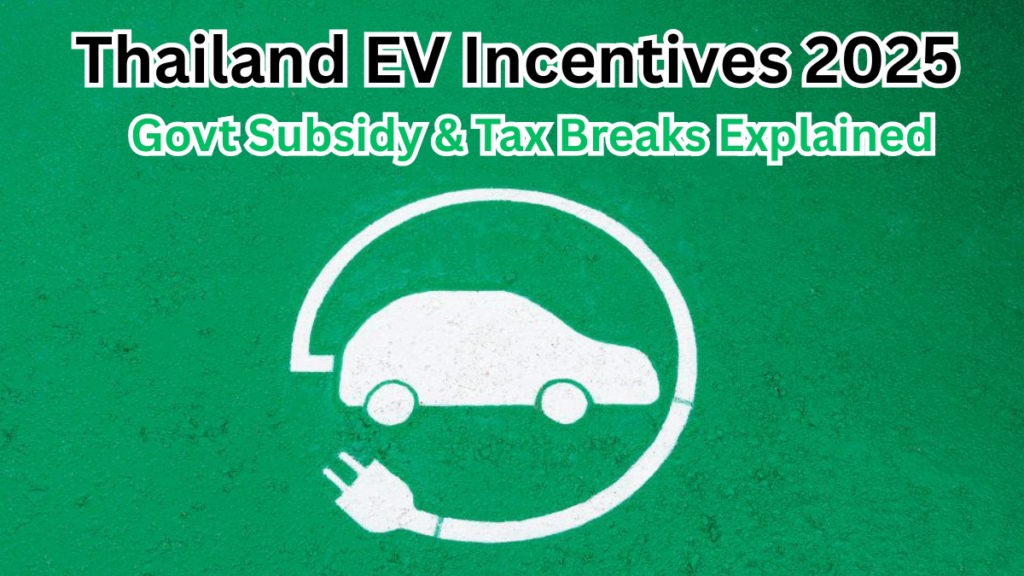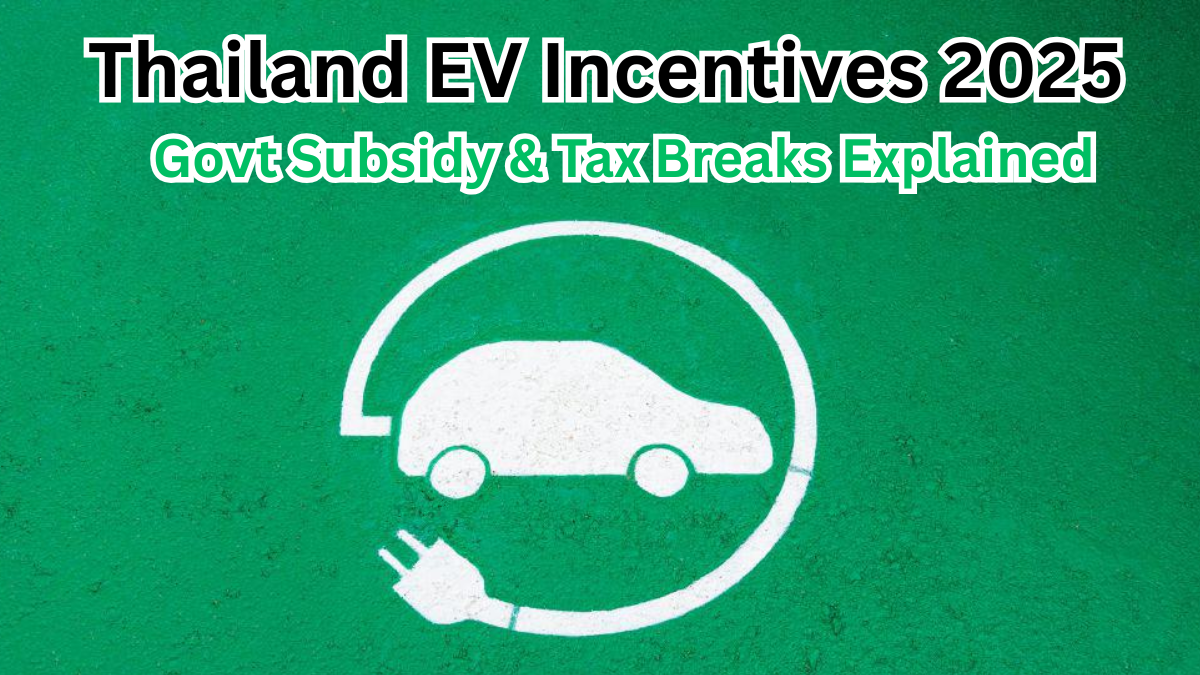As Thailand accelerates its transition to electric vehicles (EVs), the government has introduced a series of incentives under the EV 3.5 scheme to promote sustainable transportation and bolster the local EV industry. These measures, effective from 2024 to 2027, aim to make EVs more accessible to consumers and attract foreign investment.

What Are Thailand EV Incentives 2025?
The Thailand EV Incentives 2025 encompass a range of financial and tax benefits designed to encourage the adoption of electric vehicles. Key components include:
-
Purchase Subsidies: Direct financial support for consumers purchasing EVs.
-
Tax Breaks: Reductions in import duties and excise taxes for manufacturers and consumers.
-
Production Credits: Incentives for local and export-oriented EV production.
Govt Subsidy & Tax Breaks – How They Work
Purchase Subsidies
Consumers can benefit from subsidies based on the type of EV and its battery capacity:
-
Passenger EVs: Subsidies range from THB 50,000 to 100,000 for vehicles priced under THB 2 million and with a battery capacity of at least 50 kWh.
-
Electric Pick-Up Trucks: Subsidies of THB 100,000 for locally assembled models.
-
Electric Motorcycles: Subsidies of THB 10,000 for models priced under THB 150,000 and with a battery capacity of at least 3 kWh.
Tax Breaks
-
Excise Tax Reduction: Excise tax on EVs has been reduced from 8% to 2% for passenger cars and to 0% for electric pick-up trucks.
-
Import Duty Reduction: For Completely Built-Up (CBU) EVs with a retail price not exceeding THB 2 million, import duties have been reduced by up to 40% during the first two years (2024–2025).
Production Incentives
-
Local Production Requirements: Manufacturers importing EVs must meet local production quotas. For every imported EV, they must produce 1.5 locally by 2026 and 2 locally by 2027.
-
Export Credits: Each EV produced for export counts as 1.5 units towards local production quotas, aiming to boost exports from 12,500 units in 2025 to 52,000 units by 2026.
Incentive Overview Table
| Incentive Type | Details |
|---|---|
| Subsidy Amount | THB 50,000–100,000 for passenger EVs; THB 100,000 for pick-up trucks; THB 10,000 for motorcycles |
| Excise Tax | Reduced from 8% to 2% for passenger EVs; 0% for pick-up trucks |
| Import Duty | Up to 40% reduction for CBU EVs priced under THB 2 million (2024–2025) |
| Production Credit | 1.5x credit for exported EVs towards local production quotas |
Why This Matters
These incentives are part of Thailand’s broader strategy to become a leading EV manufacturing hub in Southeast Asia. By 2030, the government aims to have 30% of all vehicles produced in the country be electric, significantly reducing greenhouse gas emissions and fostering green technology innovation.
Frequently Asked Questions
1. Who is eligible for the EV purchase subsidies?
Consumers purchasing new EVs that meet the specified criteria for battery capacity and price are eligible. The subsidies are applied at the point of registration.
2. Are the tax reductions applicable to all EVs?
No, the tax reductions apply to specific categories of EVs, including passenger cars, pick-up trucks, and motorcycles, provided they meet the set criteria.
3. Do manufacturers need to produce EVs locally to qualify for incentives?
Yes, manufacturers importing EVs must meet local production quotas to qualify for certain incentives. The quotas require producing 1.5 locally for every imported EV by 2026 and 2 by 2027.
4. How can consumers apply for the subsidies?
Consumers can apply for the subsidies during the vehicle registration process at authorized registration offices.
Click here to learn more
